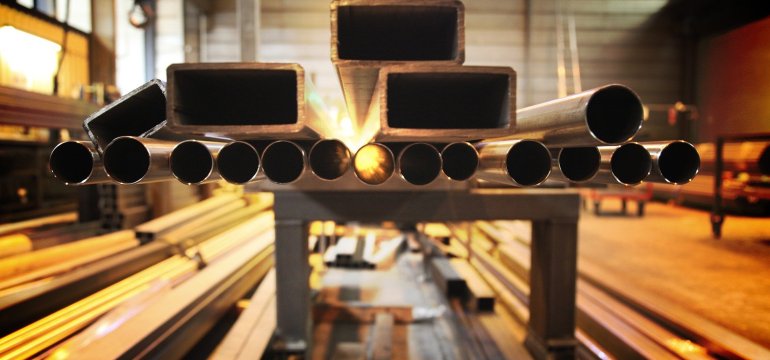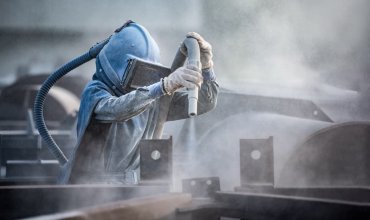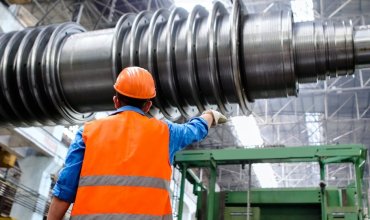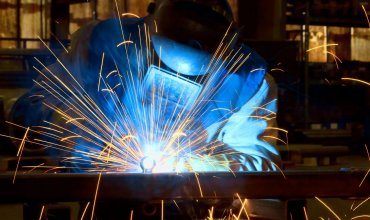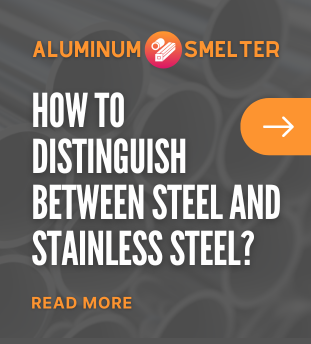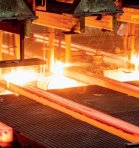Steel is an indispensable material in various fields of industry and everyday life, and its variety makes it suitable for a wide range of applications. Two popular varieties of steel are stainless steel and acid-resistant steel, which, although often confused, have important differences. So let's take a look at what the differences are between stainless steel and acid-resistant steel, as well as what applications they have and what their characteristics are.
What is stainless steel?
Stainless steel, also known as inox steel, is an iron alloy with at least 10.5% chromium, which makes it resistant to corrosion. This is because chromium reacts with oxygen to form an invisible, passive chromium oxide layer on the surface of the steel, which protects the metal from corrosion. Stainless steel is popular in many industries such as construction, food processing and medicine due to its hygienic, aesthetic and heat-resistant properties.
Thanks to its remarkable ability to self-repair when a surface is damaged, stainless steel is a durable and reliable material. This is why it is often found in kitchen countertops, cookware, bathroom fixtures or in automobiles. Resistance to corrosion is not the only advantage - stainless steel is also easy to clean and not very susceptible to deformation, making it a versatile choice for many projects.
Characteristics of acid-resistant steel
Acid-resistant steel is a special type of stainless steel that contains additional elements, such as molybdenum, which enhance its resistance to acids. Thanks to its properties, it is widely used in the chemical and petrochemical industries, where contact with aggressive chemicals is the order of the day. Its properties allow it to be used safely in environments that require special resistance to corrosion and chemical attack.
Acid-resistant steel, like stainless steel, has a passive layer, but thanks to the addition of molybdenum, it is a much more resistant layer. In practice, this means that this steel can be used in more demanding conditions where ordinary stainless steel might not cope. As a result, projects that require unparalleled chemical resistance often use this type of steel.
Differences in chemical composition
One of the key differences between stainless steel and acid-resistant steel is their chemical composition. Basic stainless steel contains chromium, which provides it with corrosion resistance, while acid-resistant steel adds molybdenum to the mix, which increases resistance to acids and improves strength. It is the addition of molybdenum that makes acid-resistant steel a more specialized material compared to standard stainless steel.
These additives also affect other properties of the steel - the higher the molybdenum content, the better the steel copes with extreme conditions, making it an essential choice in the petroleum or chemical industries. It is worth mentioning that in addition to chromium and molybdenum, the composition of the steel can be modified with additives of other elements as needed, allowing even better adjustment of its properties.
Corrosion resistance
Corrosion resistance is one of the main reasons why stainless and acid-resistant steels are so highly regarded. Stainless steel shows excellent resistance to atmospheric conditions and a variety of corrosive environments, while acid-resistant steel, thanks to its peculiarities, is suitable for applications in highly acidic conditions. In practice, this means that stainless steel will be the right choice for outdoor structures that are exposed to rain and varying temperatures, while acid-resistant steel will perform well where there is contact with aggressive chemicals.
Acid-resistant steel, especially in industrial applications, is crucial where unparalleled durability and corrosion resistance are required. Many industrial processes require steel that can withstand intense chemical attacks - in this case, acid-resistant steel is irreplaceable.
Practical applications
The practical applications of these two types of steel are as varied as their properties. Stainless steel, due to its aesthetic properties and durability, is widely used in architecture, interior design, or the manufacture of household goods. In addition, due to its ease of cleaning, it is used in catering and medicine.
Acid-resistant steel, on the other hand, with its specialized resistance, is indispensable in the chemical and petroleum industries, but also in places where it comes into contact with strongly acidic substances. Pipelines, chemical tanks, or parts of machinery operating in harsh environments are often made of this material to ensure longevity and safety.
Is it worth choosing acid-resistant steel over stainless steel?
The choice between stainless steel and acid-resistant steel depends on the specific application and needs of the project. For most typical applications, stainless steel will be perfectly adequate, offering adequate strength, corrosion resistance and aesthetics. However, in situations where the material will be exposed to aggressive chemicals or extreme conditions, acid-resistant steel becomes the best choice.
It is worth considering the selection of the right steel at the design stage to avoid unnecessary costs associated with corrosion and material replacement in the future. By adapting the material to the conditions, you can significantly extend the life of structures and equipment.
Summary - what are the differences between stainless steel and acid-resistant steel?
In conclusion, the question "what are the differences between stainless steel and acid-resistant steel?" leads us to the conclusion that while both of these steel alloys have high corrosion resistance, their application differs due to specific chemical properties. Stainless steel is versatile and aesthetically pleasing, ideal for general use in conditions that are not particularly aggressive. Acid-resistant steel, on the other hand, with its increased resistance to acids, is one of the more specialized steels and is used where other materials might not be able to cope.
Choosing the right steel is crucial to the durability, safety and efficiency of engineering and industrial projects. Understanding the differences between these materials and their properties can help you make the decision best suited to the specific needs of each project.


